Dignity, Simplicity, and Magnificence
Much of the majesty of Grace Episcopal Cathedral lies in its rich tradition of liturgy, music, worship, spiritual education, outreach and cultural offerings. In all of its services and ministrations, the Cathedral today “represents the dignity, simplicity, and magnificence of Christian worship as found in the Book of Common Prayer.” This description came from John Warren Day, who was Dean from 1927 until 1958; the same is true today.
Grace Cathedral had its beginning as a mission established by the Reverend Mr. Charles M. Callaway. Urged by Topeka’s twelve founding fathers, “Topeka Associates,” and most especially by Episcopalians Cyrus K. Holliday (also founder of the Atchison, Topeka and Santa Fe Railroad), C.C. Kellam and John W. Farnsworth, Callaway held the first public service out of the Prayer Book on January 20, 1857. It was held in Constitution Hall, Mr. Farnsworth’s building for the business of general merchandise, on the west side of Kansas Avenue between Fourth and Fifth Streets. One hundred seventy-five persons were present for this first service. The very next day, the Topeka Associates offered Callaway two lots for a church and two for a rectory, provided he continue to hold regular services in the city. The church was designated “Grace Mission.”
While establishing an Episcopal church was of great interest to the new city and its fathers, Callaway had received funding from the East to establish an “Episcopal Female Seminary.” This dual mission deserves mention as it caused quite a bidding war between Topeka and Tecumseh for the school’s site, a rivalry that continued for several years. Callaway decided to locate the school in Tecumseh, ground was broken, a charter was granted and the substructure for “The Episcopal Female Seminary of Tecumseh” was in place in early 1860.
Alarmed Topekans enhanced their offer to Callaway. In addition to four lots on Topeka Avenue, they offered a 20-acre tract (now known as Bethany Place) and 30 town lots in spring, 1860. Convinced by the offer and also believing that Topeka would grow into the larger town, Callaway abandoned Tecumseh and began the erection of a building on the northeast corner of Ninth and Topeka (the current location of the Kansas Department of Insurance, 420 SW 9th).
Sometime in 1859, services moved to the third floor of Ritchie Block, southeast corner of 6th and Kansas Avenue. On April 11 and 12, 1860, a convention of the diocese met there. On September 9, 1860, Grace Mission was legally incorporated as Grace Church with the Rev. Charles M. Callaway as rector and C.C. Kellam, James Fletcher, John W. Farnsworth, Cyrus K. Holliday and J.F. Cummings as vestrymen.
On November 16, 1860, Rev. N.O. Preston, a professor at the Agricultural College in Manhattan (now Kansas State University), was transferred to Grace Church to replace the Rev. Callaway who had resigned and been transferred to Missouri.
On January 29, 1861, the territorial legislature passed an act of incorporation for “The Episcopal Female Seminary of Topeka.” Also on that day, Kansas was admitted to the Union.
1865 – 1910
The Rev. Preston resigned in 1864 to return to his professorship. The first chancellor of the University of Kansas, The Rev. R.W. Oliver, and other clergymen in the diocese conducted services at Grace Church until the arrival of Bishop Thomas H. Vail in the spring of 1865; The Rev. John N. Lee became rector of Grace Church and head of the girl’s seminary in June, 1865. Under his leadership, the church building was completed and the school flourished.
In 1865, Grace Church moved to a new structure at the southwest corner of 7th and Jackson Streets. This church had an altar of native walnut into which were carved the words of Jesus, “This do in remembrance of me.” This altar has since been placed in each of the Cathedral’s parish locations.
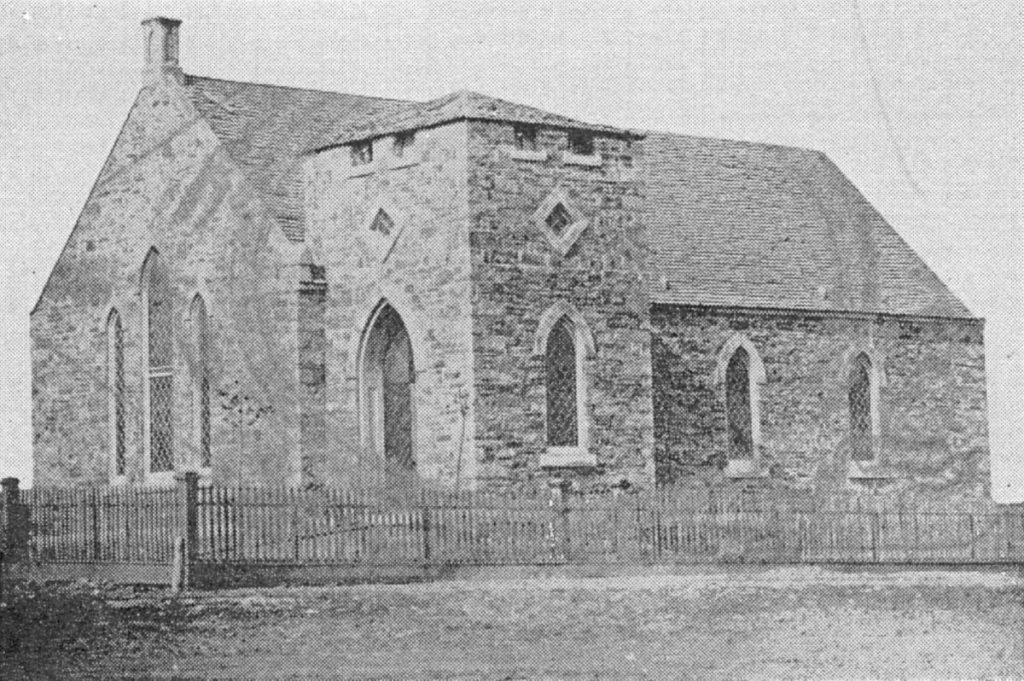
On April 13,1874, it was the decision of the vestry to enlarge and improve the building by adding a steeple and increasing seating capacity. During construction, services were held at “Union Hall,” 197 Kansas Avenue. At this time the congregation had grown to a strength of 86 communicants.
In June 1879, Grace Church of Topeka was designated the Cathedral of the diocese at the diocesan convention; The Rev. Richard Ellerby became the first dean on August 1, 1880.
In 1886, the northeast portion of Bethany Place (the seminary for women and later called College of the Sisters of Bethany) was set aside for the construction of a cathedral building. The cornerstone for Guild Hall was laid in September of 1888. This stone can now be found in the wall of the Cathedral terrace garden.
1910 – 1975
Due to economic woes, it was not until 1910 that the foundation for the Cathedral was laid. By 1912, the walls had been erected but funds were depleted and further construction was halted. Because of fund raising efforts and leadership from Bishop Frank Millspaugh (former Dean) and the Rev. J. P. DeBevers Kaye (who became Dean), money was raised for completion of the Cathedral, with exception of the towers, in 1917.
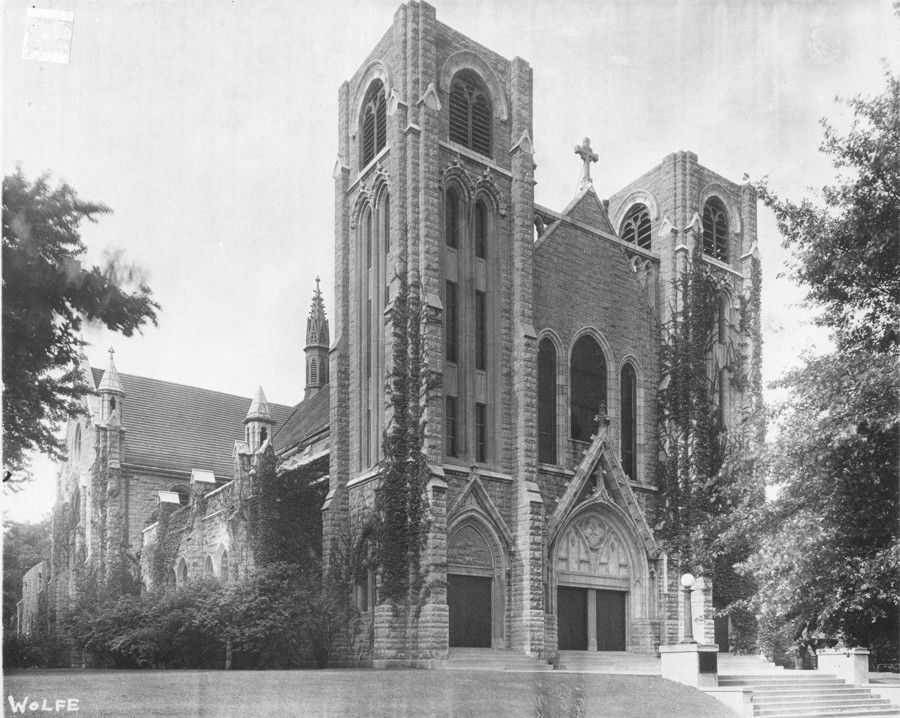
Bishop Millspaugh did not live to see his dream a reality. He is buried under the high altar. The Rev. Kaye served as Dean of the completed Cathedral for 22 years. Upon his resignation, he became rector of the American Church in Florence, Italy. Under the leadership of Dean John Warren Day (1927-1957) and Dean Leslie Skerry Olsen (1957-1984), classrooms, sacristies and cloister area, towers, and the Cathedral Hall as it exists today were added.
Cathedral Fire – 1975
November 26, 1975, is certainly the most tragic day in the Cathedral’s history. A raging fire caused by the act of a single arsonist almost completely destroyed the building. Only the outer limestone walls were left standing. Gone were the roof, the pews, the stained glass windows, wood carvings, the organ, most vestments, crosses and more. The chapel was similarly devastated. The adjacent offices and classrooms were damaged but intact. It represented the most costly fire in Topeka history at the time.
The parish rallied. Undeterred and determined to continue, more than a hundred parishioners gathered in the shell of the cathedral on Christmas Eve, 1976.
Reconstruction began immediately. In the interim the congregation gathered in the Great Hall for services. The walnut altar that had served the first Grace Church of 1865 was saved from the fire and became the altar used weekly until October 1, 1978, when the congregation returned to the Cathedral. The procession on that “Restoration Sunday” included Cathedral clergy, acolytes and choirs, Bishop Edward C. Turner, and the many workmen who had been involved in the construction — more than 100 people in all.
1984 – 2001
The Rev. Robert R. Shahan became the twelfth Dean of Grace Cathedral in the fall of 1984. During his tenure as Dean, many restoration projects were completed. In 1987, the new cathedra and other clergy chairs were installed. In 1988, the tracery around the chairs was finished and in 1992 the reredos behind the High Altar was placed and a permanent altar rail was installed.
On October 3, 1992, the Very Rev. Robert R. Shahan was consecrated as Bishop of the Diocese of Arizona. While a search committee sought a new dean for the Cathedral, the Rev. Canon Jim Peters served as Priest-In-Charge of the Cathedral.
The Rev. Marc DuPlan Lee became Dean of the Cathedral on June 13, 1993. During Dean Lee’s tenure, a capital campaign was undertaken to make the Cathedral fully handicap accessible. Ramps were built and sidewalks poured, an elevator was installed, the cloister porch connecting the Cathedral with the administration building was enclosed and two new restrooms were added on the main floor. Despite such needed progress, these were difficult times at the Cathedral. Attendance dropped and with it the parish budget declined. Dean Lee resigned April 24, 1997.
From 1997-2000, Bishop Smalley assumed the role of Interim Dean and appointed the Rev. Robert Terrill to serve as Provost. Father Terrill served the Cathedral as pastor and counselor and took a leading role in identifying the needs of the Cathedral’s future restoration.
A New Phase of Energy and Initiative
With the calling of The Rev. R. Steve Lipscomb as its Fourteenth Dean on Feb. 1, 2001, the Cathedral embarked on a new phase of energy and initiative. A successful capital campaign was held which allowed overdue and much needed restoration to the exterior of the building. In addition, the generous gift of a parishioner allowed for significant restoration improvements to the sanctuary; a memorial gift allowed installation of a beautiful sandstone-carved pulpit. Other significant individual gifts have provided for the modernizing of the Cathedral’s 61 rank Schantz pipe organ, the replacement of the last of the stained glass windows destroyed by the 1975 fire, and the refurbishing of the Cathedral’s Great Hall.

In many ways, the Cathedral’s growth has mirrored the growth of Topeka throughout its history. Topeka suffered a horrific tornado in 1966; we had a fire. We have been blessed by individuals with courage and foresight. We have also been blessed by generosity and grace. The Cathedral today is a living, growing testament to enduring faith and God’s love.
As Bishop Goodrich R. Fenner once said: “Succeeding generations have adorned Grace Cathedral and built mightily into its spiritual fabric. What is here today is vastly more extensive than our founders could have dreamed. But dreams become realities in the hearts of earnest men…. This cathedral stands before us as a perpetual call to worship. In the worshipping body of the Church . . . everything is gathered up, and given significance. In the worship of God we come to know the true and ultimate authority in our lives — the will of God for us.”
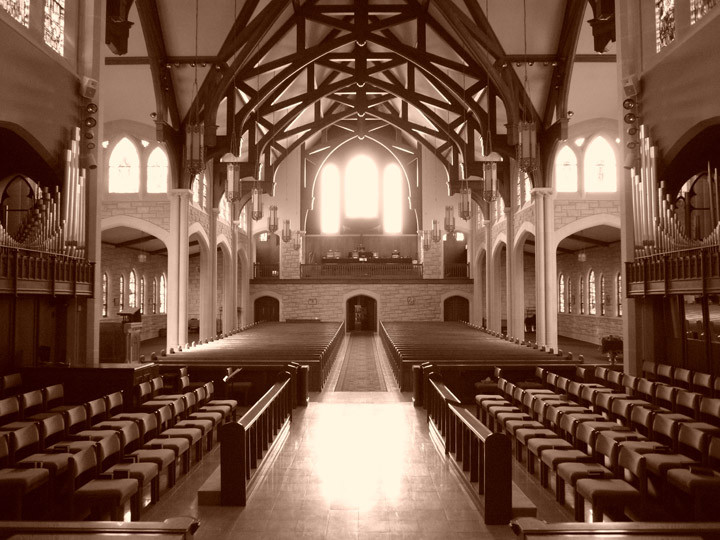
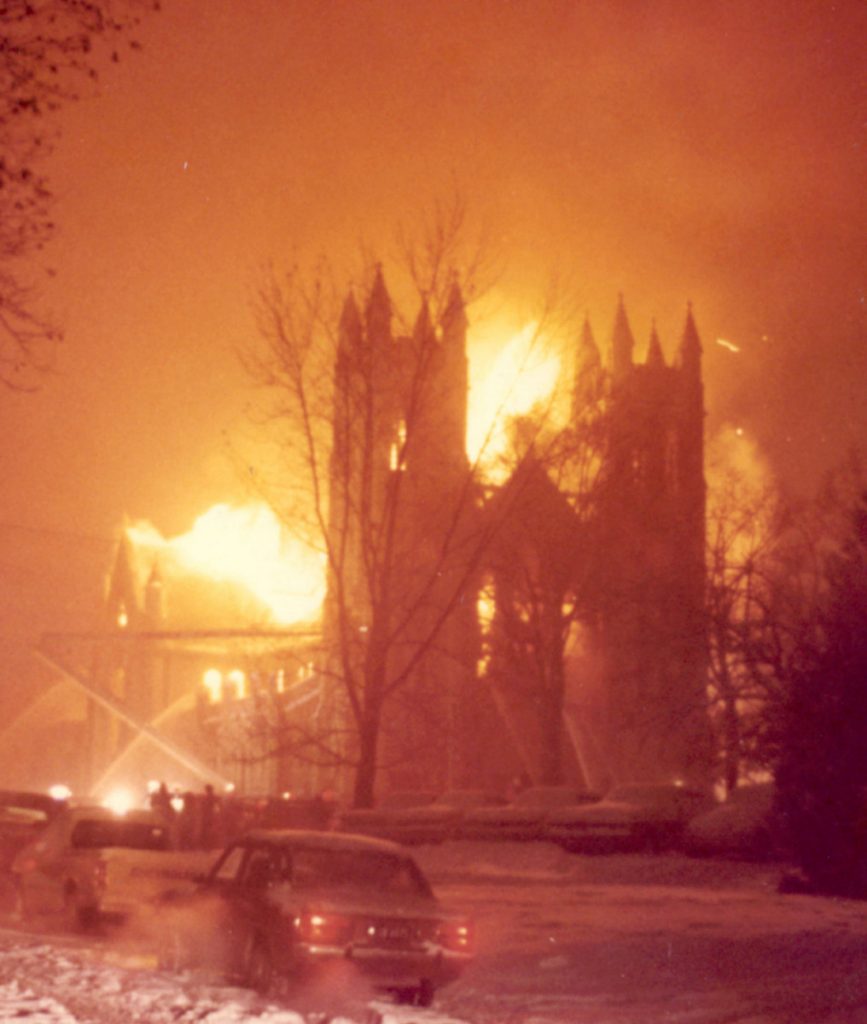
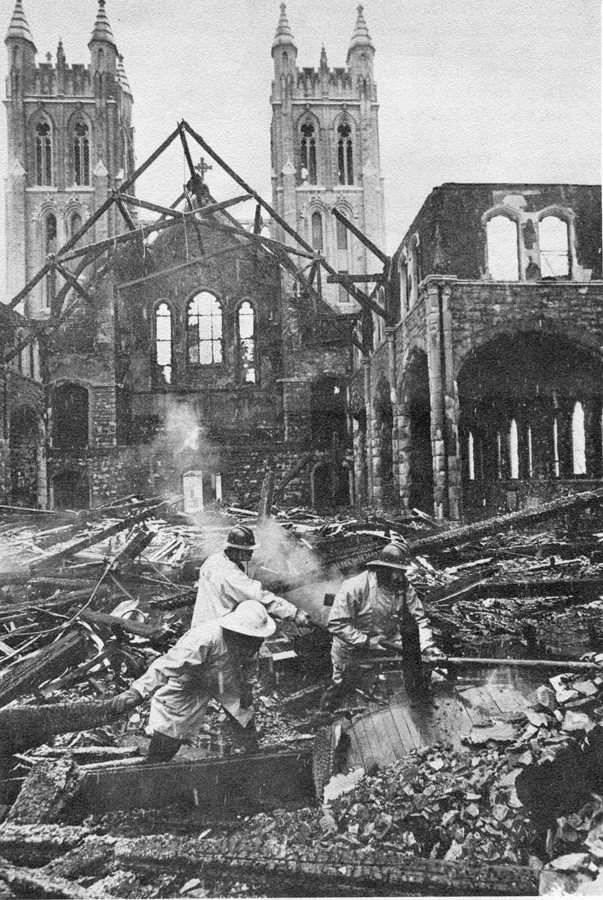
 701 SW 8th Ave.
701 SW 8th Ave.